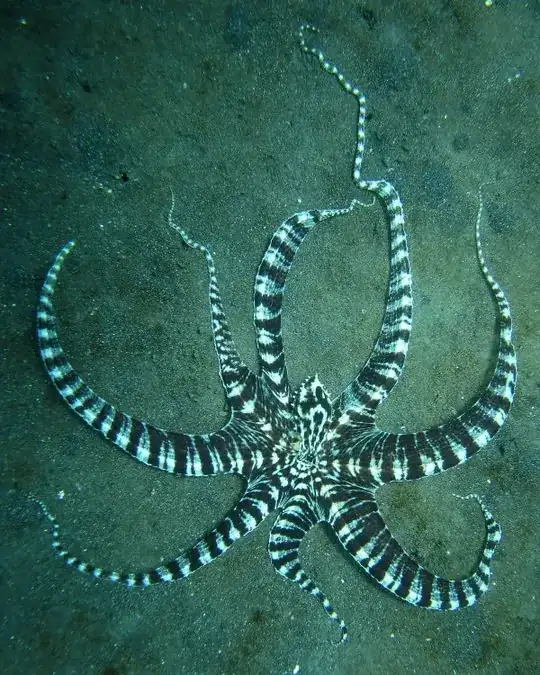It looks like everyone else has used the usual definition of "see" - using reflected light to visually locate an object. There are many other ways that animals "see" the world around them, though: bats and dolphins, for instance, use echolocation; snakes have a type of heat-vision; spiders use tiny vibrations in the earth (or their web); many predators use their sense of smell to locate prey.
Visually, to become truly invisible (that is, unable to be seen in front of a variety of backgrounds, even when moving), a creature would need to bend light around itself. Even then, any distortion from refraction or absorption of light would cause shadows or edges that could be easy to detect. Furthermore, if an animal is truly invisible, then no light can reach its eyes; it would be permanently blind. Some sea creatures manage to be nearly invisible in water, but even then, their eyes and some organs are visible.
However, there are many other ways to become invisible. Sonar or echolocation use bursts of reflected sound to locate objects. There are two ways to appear invisible in that situation: absorb the sound waves, or cancel out the sound waves. Specially-engineered foam can absorb nearly 100% of sound, from almost any angle; that would provide passive invisibility. Active sound-canceling headphones record ambient sounds and play inverse waves to cancel them out. While sound absorption can (and is) used in nature, sound cancellation is much more complex, and unlikely to be used. However, neither of these would provide true invisibility; an echo against a wall will show an obvious "hole" where you have absorbed or canceled the sound. It may be enough to confuse some predators, but it wouldn't be true invisibility.
For a snake's heat-vision, you must be the same temperature as your surroundings; in warm weather, cold-blooded animals can approach ambient temperature. Warm-blooded creatures can mask a heat signature by sweating, or exterior cooling methods like submerging themselves in a cool liquid. The key is to match the ambient temperature exactly - even the smallest temperature difference is enough to break invisibility.
Being invisible to a spider's vibration-sense is much more difficult. Flying above the ground will cause drafts of air to make the ground move; even the beating heart of a tiny mammal provides enough vibration for a spider to pick up on it. Snails and slugs move very slowly, using fluid movements and minimizing impacts, and are probably best equipped to avoid vibration-sense.
Even if a creature managed to be truly invisible to light, they may still be completely visible through sound, smell, heat, or vibration, which means predators will simply use alternate means to hunt them. Invisibility is hard - but there are a lot of shortcuts. Instead of invisibility, most creatures rely on passive or active camouflage, or by "jamming the signal": squid squirt jets of ink to muddy the water, Bertholdia Trigona actively jam bat's echolocation, and many creatures mask their scent by rolling in dirt or all manner of other things. When it comes down to it, camouflage is a lot easier than true invisibility.

